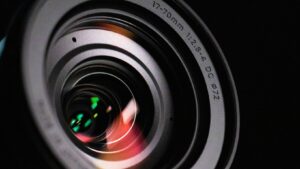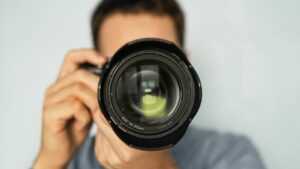Choosing the right lens for a camera can make or break a photograph. Whether you’re a professional photographer or an enthusiastic hobbyist, understanding the different types of camera lenses is crucial to capturing the perfect shot. Each lens serves a unique purpose, from wide-angle lenses that capture vast landscapes to telephoto lenses that bring distant subjects into sharp focus. Navigating the world of camera lenses can feel overwhelming with the variety of options available. However, by learning about the specific uses and strengths of each type, photographers can make informed decisions that enhance their work. This article delves into the different types of camera lenses and their best applications, helping you find the perfect lens for your photographic needs. Certain lenses serve specific purposes. Fish-eye lenses create ultra-wide, curved images, ideal for creative photography. Tilt-shift lenses allow photographers to control perspective, making them valuable in architectural photography.
Which Lens Is Used In camera

Photographers use various lenses to achieve distinct effects. The choice of lens depends on the desired outcome and the type of photography being pursued. Prime lenses have a fixed focal length. They offer high image quality and better low-light performance. Common focal lengths are 35mm, 50mm, and 85mm. These lenses excel in portrait, landscape, and street photography due to their sharpness and simplicity. Zoom lenses offer a range of focal lengths in one lens. They increase versatility and convenience, making them ideal for travel and event photography. Examples include 24-70mm and 70-200mm lenses. They allow photographers to quickly switch between wide-angle and close-up shots without changing lenses. Macro lenses specialize in close-up photography. They capture fine details and textures. Photographers use macro lenses for nature, product, and scientific photography. They enable sharp focus on subjects at very close distances, often producing a 1:1 magnification ratio. Wide-angle lenses have short focal lengths, typically ranging from 14mm to 35mm. They capture expansive scenes and provide a broader field of view. These lenses are popular in landscape, architectural, and interior photography.
Choosing The Right Lens For Your Needs

Selecting the right lens ensures the best image quality and captures the desired effect in various photography scenarios. Different lenses excel in different types of photography. In portrait photography, prime lenses with focal lengths between 50mm and 85mm are preferred. They offer excellent sharpness and bokeh. The Canon EF 50mm f/1.8 and the Nikon 85mm f/1.8 are popular choices. These lenses provide a shallow depth of field, making the subject stand out against a blurred background. For landscape photography, wide-angle lenses capture expansive scenes. Focal lengths under 35mm, like the Canon EF 16-35mm f/4L and the Nikon 14-24mm f/2.8, are ideal. They allow photographers to include vast landscapes in a single frame, emphasizing depth and scale. Telephoto lenses dominate action and sports photography. With focal lengths over 70mm, they magnify distant subjects.
Popular Lens Brands And Models

Choosing the right lens is just the beginning; selecting from popular brands and models can further refine a photographer’s toolkit. Canon and Nikon offer an extensive range of lenses, from versatile zooms to specialized macro options, catering to both amateurs and professionals. Sony’s mirrorless lens lineup is renowned for its innovative design and compact form, perfect for those who value portability without sacrificing quality. Sigma and Tamron provide excellent third-party alternatives, often praised for their affordability and performance. Each brand brings unique strengths to the table, ensuring photographers have access to the tools they need to capture stunning images. Understanding the nuances of these lenses and their applications empowers photographers to elevate their craft, ensuring they have the right equipment for every shooting scenario. Telephoto lenses feature long focal lengths, such as 70mm to 300mm. They magnify distant subjects. Sports, wildlife, and astrophotography often benefit from telephoto lenses due to their ability to capture subjects from far away without losing detail.

